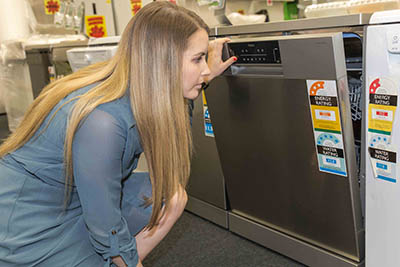InkWELS newsletter
Water Efficiency Labelling and Standards (WELS) scheme
Issue 1, 2018
The Water Efficiency Labelling and Standards (WELS) scheme newsletter is published quarterly to update you on developments and highlight some of our achievements.
If you have particular topics you’d like to see covered in future, please let us know.
Australia taking the lead on an international water efficiency standard
Australia has been successful in securing international support to establish a new International Organisation for Standardisation (ISO) project committee on water efficiency labelling. The ISO Technical Management Board Secretariat voted in favour of Australia’s world leading water efficiency proposal in mid-February 2018.
Australia partnered formally with Singapore, Malaysia, China and New Zealand to develop the ISO proposal. These countries have labelling programs similar to WELS.
Standards Australia and the WELS team will engage with Australian industry representatives throughout the standards development process. This will ensure the resulting standard allows us to realise the benefits of an internationally consistent standard.
An ISO International Standard based on the current WELS standard, AS/NZS 6400, is expected to:
- decrease costs for Australian businesses
- improve access to overseas markets for Australian manufacturers
- increase compliance with the WELS scheme in Australia.
It will also provide a tool that can be used by other countries to save water by implementing similar consumer labelling schemes.
For more information read the media announcements from Standards Australia.
WELS compliance and enforcement strategy
The new compliance and enforcement strategy for 2018–20 is now available.
The strategy sets out our approach to maximise compliance with the Water Efficiency Labelling and Standards Act 2005.
Industry stakeholders contributed their views on where to target resources, to ensure compliance and enforcement activities are as effective as possible.
We addressed the key issues raised by including the following strategies:
- Continue inspections and follow-up activities with a range of businesses, with a stronger focus on online sellers
- Address widespread non-compliance in the building industry and expand the building industry project to include modular units
- Continue communicating WELS requirements with industry, including improving communication tools and participating in industry seminars, workshops and conferences
- Apply WELS compliance and enforcement tools in a risk-based, responsive, consistent manner
- Streamline activities and increase cooperation with other regulators
- Consider developing and implementing a product check-testing program
These strategies also align with recommendations from the 2015 WELS scheme review.
To read the full strategy and a summary of submissions to the consultation, visit Our approach to compliance.
Registering minor products
Registering a product as a minor product can reduce your registration costs. But if you don’t meet the necessary requirements, your registration could be suspended or cancelled.
If your registration is cancelled, it’s illegal to offer the product for sale in Australia.
Substantiation will be a key focus area. To register a minor product, you must be able to demonstrate that less than 100 units will be sold in Australia in a specified 12 month period.
If you have registered minor products, the WELS Regulator may ask for evidence that fewer than 100 units were sold, or that less than 100 units of the product are expected to be sold in the next 12 months. Failure to do so could result in having your product registration suspended or cancelled.
To find out more about minor product requirements visit the WELS Determination 2013 (No.2); or contact our registrations team for assistance on 1800 218 478 or WELS.
Promoting WELS can help your business
Saving water is important to Australian consumers who want to save money on bills and reduce their environmental footprint. The star rating provides a simple tool you can use to differentiate and promote your products.
The information on the WELS label can be used to work out how much your customer could save by choosing a more efficient product.
For example, take the following steps to work out how much a customer could save by purchasing a 4-star shower with a flow rate of 7 litres per minute, rather than a 3-star shower with a flow rate of 9 litres per minute:
- Identify the difference in usage. In this case, the 4-star shower would save 2 litres per minute.
- Estimate how much time the shower is likely to run each day. For example, in a family of four, who each take daily 6-minute showers, the shower might run for 24 minutes each day.
- Multiply the savings per minute by the daily shower length. So, 2 litres per minute x 24 minutes = 48 litres saved each day.
- Multiply this by 365 days in a year. The more efficient shower saves 17,520 litres per year.
- Multiply 17.520 by $3.08*, the average cost of 1000 litres of household water in 2015-16.
Your customer can expect an annual saving of $52.
So in the case above, even if the more efficient shower costs $50 more, the customer will get it back in the first year. They will also continue to save money every year after.
If two of the family members are teenagers, who shower for 15 minutes a day, the savings increase to $94 per year.
Or, if they own a 100-unit motel, and each unit’s shower runs for an average of 10 minutes per day, the savings rise to $2,248 per year.
For more information visit our webpage about comparing products.
*Data from the Australian Bureau of Statistics Water Account 2015-16







